Piston ring
- 2011-12-07 13:30:02
-
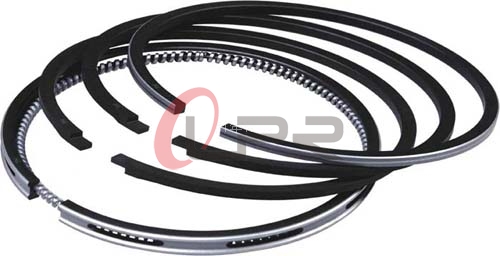
(clik the engine application to products pages )
How engine works
We will begin our explanation of basic engine operation by looking at the four-stroke working cycle of the engine
These four strokes are usually called
1< The intake stroke
2< The compression stroke
3< The combustion(expansion)stroke
4< The exhaust stroke
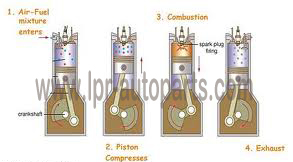
Piston ring sets
Piston rings form a ring pack, which usually consists of 2-5 rings, including at least one
compression ring. The number of rings in the ring pack depends on the engine type, but
usually comprises 2-4 compression rings and 0-3 oil control rings. For example, fast
speed four-stroke diesel engines have 2 or 3 compression rings and a single oil control
ring. The oil control rings used in diesel engines are two-piece assemblies and spark-
ignited engine oil control rings may be three-piece assemblies as well. In addition to the
general compression rings and oil control rings there are scraper rings, which have the
tasks of both sealing and scraping off the oil from the liner wall. Scraper rings have a
beak intended for scraping off the oil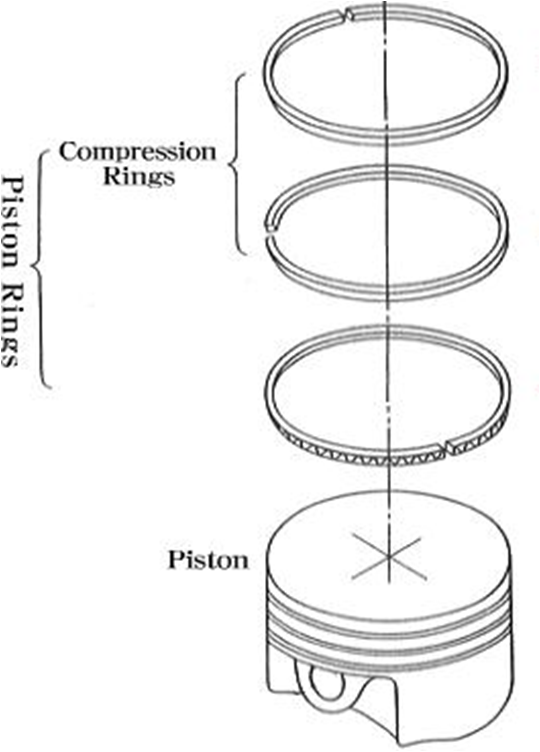
Top Ring→This is referred to as the “upper compression ring”. The upper compression ring is the piston ring that operates under the harshest conditions with respect to thermal and mechanical loading. Its job is to form a gas-tight barrier between the piston and cylinder wall in order to seal the combustion chamber
Second Ring→This is referred to as the “lower compressing ring”. One of its jobs is to work together with the top ring in order to “seal” the combustion chamber.
Oil Ring→As its name” oil control ring” implies, this ring scrapes excess lubricating oil off the cylinder wall, maintaining proper lubrication while keeping oil consumption within proper limits.
Main functions of piston ring
1.1 to seal off the combustion pressure,
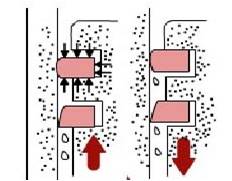
The top ring provides a gas seal and the second ring below it assists in the sealing and adjusts the action of the oil film. This means that the combustion chamber must be made as gas-tight. As possible ,so that the pressure generated by the quickly burning combustion gases will move the piston in the cylinder causing the crankshaft. To turn, making power available. Not only important for the combustion expansion stroke, gas-tightness is also very important for the intake, compression and exhaust strokes as well. This general function can be simply called “gas sealing”
1.2 to distribute and control the oil
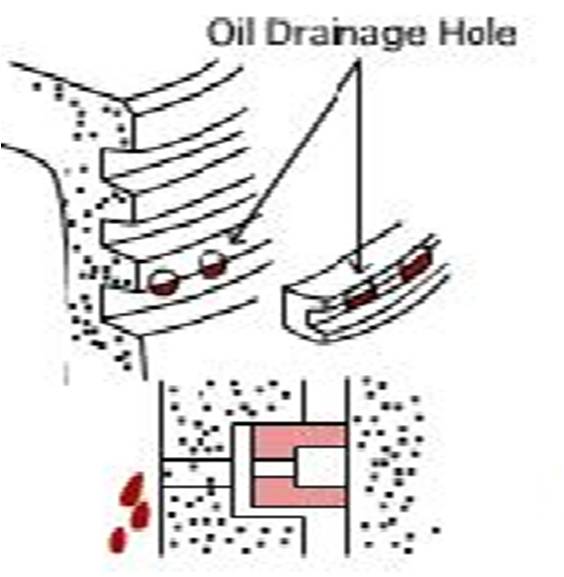
The piston rings require some oil for lubrication, however it is desirable to keep this amount to a minimum. The rings act in a scraping manner keeping excess oil out of the combustion chamber, in this way, oil consumption is held at an acceptable level and harmful emissions are reduced.
The oil scraped off by the oil ring flows from the drainage into the piston.
1.3 to transfer heat,
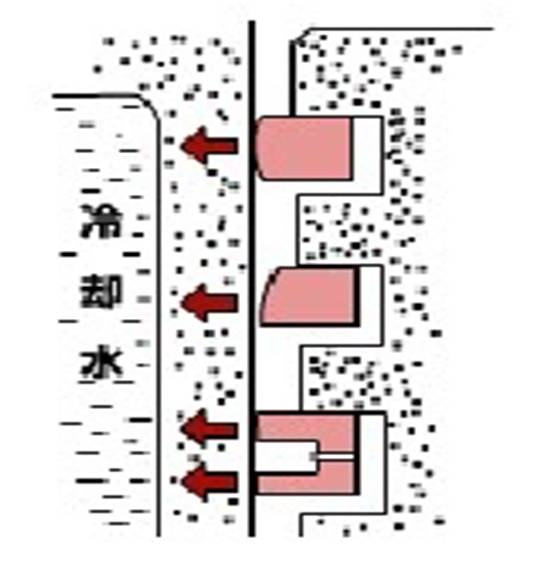
The piston rings act to carry heat away from the hot piston into the cooled cylinder wall block of the engine. Heal energy flows from the piston groove into the piston and then into the cylinder wall, where it eventually will be transfer function is very important to maintaining acceptable temperatures and stability in the piston and piston rings, so that sealing abilities not.
1.4 to stabilise the piston
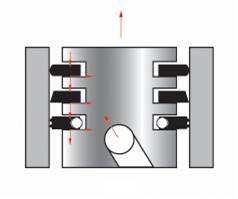
Structure Of The Piston Ring
Piston Ring Types: According to their function, it is made between compression rings and oil control rings. There are the following main groups, each having a particular application
1.) R Plain Compression Ring This is a compression ring with a rectangular cross section and with its geometrically simply from provides an adequate seal under normal operating condition.
2.) ET This is a compression ring with one side tapered
3.) T This is a compression ring with both sides tapered and is used in those cases when ring sticking can be expected. Due to its wedge shape, any radial movement of the ring will alter its axial clearance and thus minimise the build up of combustion residues.
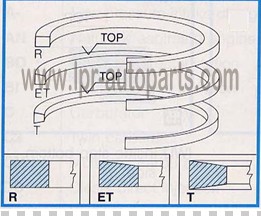
1.)M This compression ring has a tapered running surface which is intended to shorten its running-in period. At the start, the ring and cylinder are n line contact only but with high unit pressure. The gas pressure which also acts at the running surface of the ring provides however some slight relief .Due to their oil scraping action, these rings are often used as an aid in controlling the oil consumption of an engine.
2.)N Napier Ring This ring can be considered as a compression ring with an oil scraping property. The recess in the ring causes it to twist in a manner similar to the compression rings. The lower edge of the running surface makes contact with the cylinder
NM Taper-face scraper ring (Stepped)
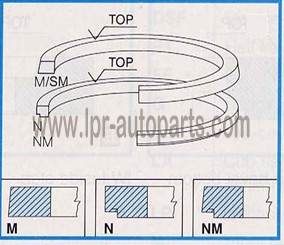
LP Compression rings with an L-shaped cross section commonly installed in small 2-stroke engines in order to improve control of the gas flow through the cylinder ports. Due to its resistance to flutter.
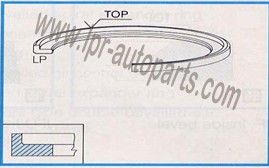
S Slotted oil control ring This is a slotted oil control ring with parallel sides and tow contact land. Due to the narrow lands of this type of ring, a high a unit pressure is achieved
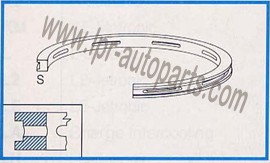
G Double-bevelled oil control ring Similar to the type Bevel-Edged oil Control Ring but by chamfering the edges of both lands in same direction, the oil scraping effect is even further improved
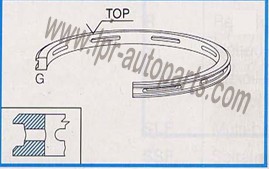
D In order to achieve a further increase in unit pressure and thereby a better oil scraping effect the outside edge of both lands are cham-fered
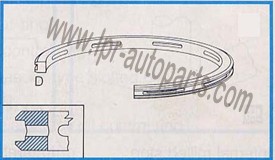
SSF Oil control ring with spiral Expander
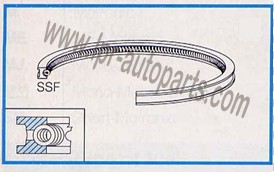
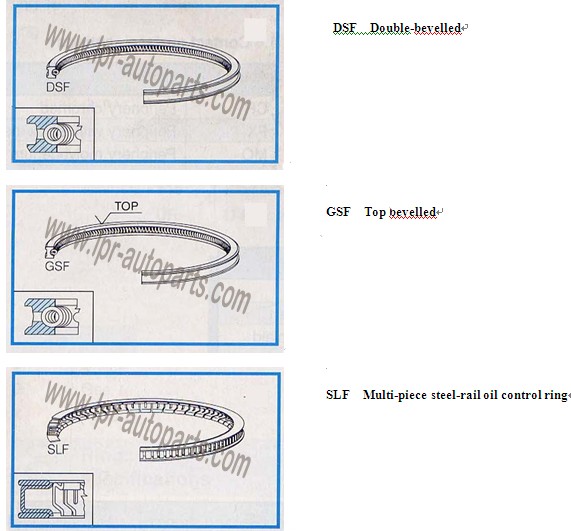
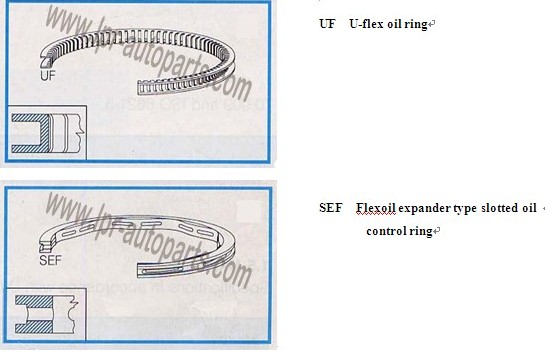
Surface Treatments
Surface treatment serve to improve the running-in of piston rings and within limits to inhibit corrosion. This latter feature is only relevant in the case of prolonged storage
We have developed piston rings with 36 kind of engines applications as follows:
Phosphating and Ferroxiding
These two processes ensure that running-in occurs Rapidly and without scuffing. By chemical and thermal means the surface of a ring is converted respectively to crystalline phosphates and black iron oxide
The phosphate layer wears away more easily than the base material of the ring thus achieving a more rapid running-in. The rubbed off particles of iron oxide are so hard that during the running-in process they serve as a first class abrasive. Both layers have a limited resistance to scuffing and in this respect are similar to a nitrided layer. They are therefore fitted with success to engines in which the level of scuffing is not too high.
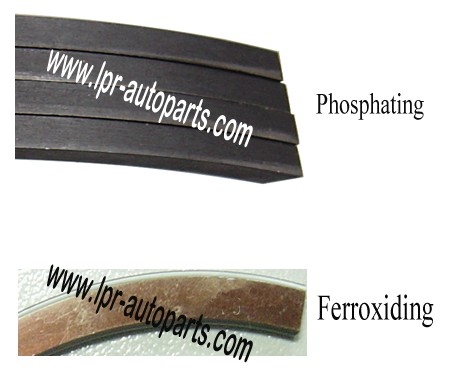
Peripheral Coatings
Chrome Plating
An electrodeposited chromium coating has excellence resistance. In addition , its good resistance without question superior to both uncoated and treated ring. The greatest wear occurs generally at the top ring at T.D.C. This is due to the inferior running that are present.
As diesel engines have to reach an extremely long life they are usually equipped with more than or plated piston ring. Even the oil control rings use engines are chrome plated over their running surface.
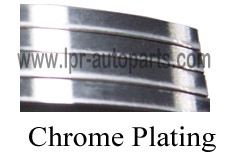
Molybdenum Coating The best method to avoid scuffing is to inlay the Running surface or to coat if completely wit molybdenum. This can be accomplished by a flame as flame as well as a plasma spraying process.
This high resistance to scuffing of the molybdenum coating can be related to its high melting melting point .to its porosity ,and to the lubricating effectiveness of the oxidized molybdenum layer that can be formed during the breakdown of the oil film. Resulting from metal spraying acts effectively as an oil reservoir ,and will improve lubrication under critical running conditions. The face that porosity influences the strength of a small contacting areas, e,g. oil control rings.
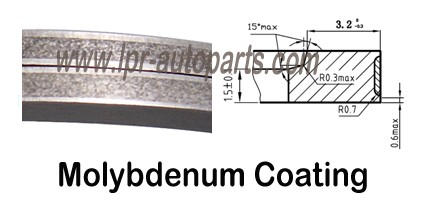
(clik the engine application to products pages )
Material Specifications
Piston: K1 Standard≤Ø200mm
K2 Standard > Ø200至400mm
K3 F11 ≦Ø200mm
K4 IKA
K5 标准型> Ø400至600mm
K6 F12
K9 KV1 ≦Ø200mm
K12 IKA3
K13 KV > Ø200mm
Steel Piston Ring And Spring Steels
For Piston Rings
KS3 3X90CrMo V18
KS5 58Cr V4
KS6 Spring Steel similar to C67
KS7 7 Oil Hardened and Tempered
Spring steel
KS11 Spring Steel similar to X 10 Cr
Mn Ni 177
KS12 Spring steel similar to Cf 70
KS15 Spring Steel S
Material Specification—K1—
(Grey Cast Iron, Not Heat Treated)
Material: Standard
Application:piston rings up to 200mm nominal diameter
Chemical Composition(%):
C: 3.6-4.0 Si: 2.4-3.0
Mn: 0.5-0.8 P: 0.4-0.6
S: ≦0.12 Cr: ≦0.3
Cu: ≦0.3
Microstructure:
Graphite: preferably lamellar and
Uniformly distributed.
Matrix : pearlite, ferrite not exceeding 5%
Phosphide Eutectic : Preferably continuous network
Mechanical Properties:
Hardness: HRB 96-106 210-280HB
Bending strength: ≧350 N/mm2
Modulus of Elasticity:85000-115000N/mm2
Coefficient of Thermal Expanslon (10-6mm/mm。C)
20--100。C 11.1
20--200。C 11.4
20--300。C 11.6
20--400。C 11.9
20--500。C 12.2
20--600。C 12.5
Density:
7.3g/cm3
Material Specification—K2—
(Grey Cast Iron, Not Heat Treated)
Material: Standard
Application: Ø200mm--- Ø400
Chemical Composition(%):
C: 3.3-3.8 Si: 2.3-2.8
Mn: 0.5-0.9 P: 0.4-0.6
S: ≦0.12 Cr: ≦0.5
Cu: ≦0.5
Microstructure:
Graphite: preferably lamellar and
Uniformly distributed.
Matrix : pearlite, ferrite not exceeding 5%
Phosphide Eutectic : Preferably continuous network
Mechanical Properties:
Hardness: HRB 94-104 200-260HB
Bending strength: ≧300 N/mm2
Modulus of Elasticity:75000-105000N/mm2
Coefficient of Thermal Expanslon (10-6mm/mm。C)
20--100。C 11.1
20--200。C 11.4
20--300。C 11.6
20--400。C 11.9
20--500。C 12.2
20--600。C 12.5
Density:
7.35g/cm3
Material Specification—K3—
Material: X90 Cr Mo V 18,Mat –No 1.4112
Application: Steel Piston Rings
Chemical Composition( %):
C: 0.8-0.95 Si: 0.35-0.50
Mn: 0.25-0.40 P: ≦0.04
S: ≦0.04 Cr: 17.0-18.5
V: 0.08-0.15 P: ≦0.04
Mo: 1.0-1.25
Microstructure:
Tempered martensite with uniformly
Dispersed carbides.
Mechanical Properties:
Hardness: HRC38—44
Modulus of Elasticity:≈210000 N/mm2
Coefficient of Thermal Expansion:
20--100。C 10.5
20--200。C 11.0
20--300。C 11.0
20--400。C 11.5
20--500。C 12.0
Density: 7.7g/cm3
(clik the engine application to products pages )
- [Return Home] [Print] [Go Back] Next
- Piston
- Bedford
- BMW
- Catterpillar
- Cummins
- Daewoo
- Daf
- Daihatsu
- Deutz(K.H.D)
- Fiat/iveco
- Ford
- Hino
- Honda
- Hyundai
- Isuzu
- John deer
- Kamaz
- Kia
- Komatsu
- Landrover
- Liebherr
- Lister
- Lombardini
- Mack
- Man
- Mazda
- Mercedes Benz)
- Mitsubishi
- MTZ (Belarus)
- MWM
- Nissan
- Opel
- Perkins
- Peugeot
- Renault/RVI
- Scania
- Steyr/Howo
- Suzuki
- Toyota
- Volvo
- VW
- Yanmar
- Zetor
- Piston ring
- ASIA
- Bedford
- BMW
- Caterpillar
- Chrysler
- Cummins
- Daewoo
- Detroit
- Daf
- Daihatsu
- Deutz (KHD)
- Fiat/Iveco
- Ford
- Hino
- Honda
- Hyundai
- Isuzu
- John Deere
- Kia
- Komatsu
- Man
- Mazda
- Mercedes-benz
- Mitsubishi
- Nissan
- Opel
- Perkins
- Peugeot
- Renault/RVI
- Saviem
- Scania
- Steyr
- Subaru
- Suzuki
- Toyota
- Volkswagen
- Volvo
- Yanmar
- Marine
- Air compressor
- Cyliner Liner
- Gasket kits
- Engine bearing
- Engine head & block

 Piston ring
Piston ring